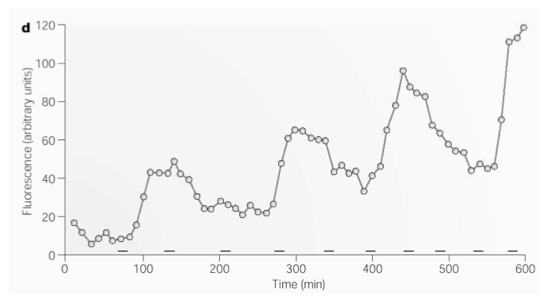
Ring oscillator
flickr - Gaetan Lee
In a digital circuit, we always have a propagation delay between the input and output, this is also true for a genetic circuit. A ring oscillator, which is a device assembled with an odd number of inverters attached in a series, and the final output from the last inverter is fed back to the input of the first inverter, can be constructed using this characteristic. If we engineer the genes in cells in much the same way, where gene expressions occur to repress the next gene in series, we would as well end up with an analogous biochemical one. Bioengineers from Princeton University conducted an experiment in 2003 on such biochemical inverter and this below is what they observed.1
References
1 Weiss, R.: Genetic Circuit Building Blocks for Cellular Computation, Communications, and Signal Processing (2002) (Including the figure used)
